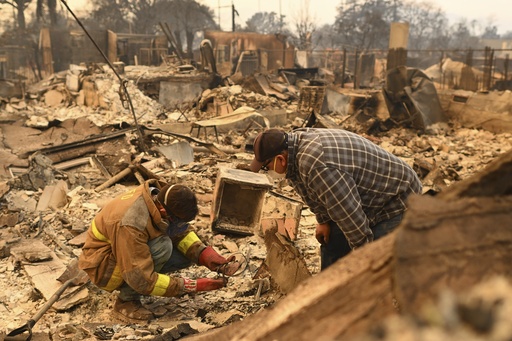The Palisades Fire that has ravaged Los Angeles, leaving at least eight dead, may have reignited from remnants of a New Year’s Eve blaze.
This earlier inferno, reportedly sparked by fireworks, was believed to have been extinguished six days before the current tragedy began, according to a Washington Post report.
Experts suggest that powerful winds could have reignited lingering hot spots, creating a catastrophic scenario in one of California’s most destructive wildfires. The publication’s analysis of satellite images, videos, and interviews reveals that the second blaze erupted in the same area as the New Year’s Eve fire.
Slower Response Raises Concerns
Residents in the Pacific Palisades neighborhood expressed frustration over the delayed response to the fire that erupted last Tuesday. Michael Valentine, a local who witnessed both fires, described a stark difference in response times. “The first time, firefighters arrived quickly. The second time, it felt like forever,” he said.
Valentine and his wife called the Los Angeles Fire Department 30 minutes apart, only to find the lines busy. Crews were stretched thin, responding to other emergencies, while strong winds prevented water-dropping helicopters from operating effectively.
“For the longest time, I didn’t see any police or firefighters. The fire was moving fast, and no one was there,” Valentine added. He took matters into his own hands, attempting to wet down homes, which led to multiple burns and a back injury after falling off a ladder.
Experts Weigh In on the Fire’s Origin
The Santa Ana winds and drought conditions created a perfect storm for reignition, even days after the initial blaze. Fire scientist Michael Gollner explained, “Fires can transition from smoldering to flaming. It’s possible the earlier fire rekindled.”
Satellite images captured smoke originating near the burn scar left by the New Year’s Eve blaze in the Temescal Ridge area. That fire, although small and contained within four hours, may have left behind embers capable of reigniting.
Residents Blame Illegal Fireworks
Local hiker Darrin Hurrwitz, who passed the fire’s origin an hour before the flames erupted, reported smelling smoke that briefly disappeared. Another resident blamed the New Year’s Eve celebration, where fireworks are often set off illegally. “People do this every year. It’s dry, there’s no rain, and they still light fireworks,” he said.
Investigators continue to probe the origin of the Palisades Fire, searching for definitive evidence to determine whether it was reignited by the earlier blaze. Meanwhile, the destruction left behind has turned parts of Malibu and Pacific Palisades into haunting landscapes of ash and rubble, highlighting the devastating consequences of human negligence and natural forces combined.




